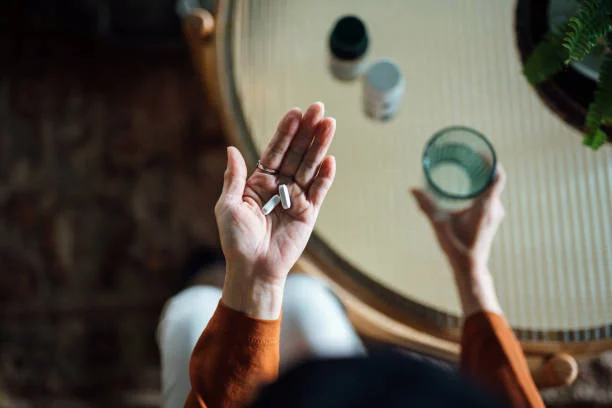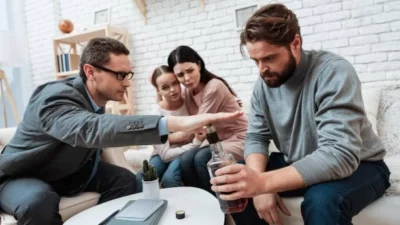Some people can’t get out of bed without them. Others can’t pick up their kids, walk to the mailbox, or sit through a Zoom call without that bottle in the bathroom cabinet. We love to talk about “pill addiction” in America like it’s a black-and-white problem: bad people, bad choices, bad outcomes. But a lot of people who live with daily, grinding pain know that reality doesn’t fit into a tidy story. For them, pain pills aren’t about chasing a high. They’re about getting through the day.
This isn’t a moral failing, and it’s not a headline to gawk at. It’s the quiet undercurrent in countless households, hidden under PTO emails, grocery runs, and tight smiles in carpool lines. Painkillers can help people reclaim a sliver of normalcy. But when dependence grows quietly, people can find themselves terrified to stop—and equally terrified to keep going.
Living In The Gray Area
Chronic pain is relentless. It doesn’t care if you’re a CEO or a mom of three. It doesn’t care that you’re trying to “tough it out” because you’re scared to end up on the wrong side of a pharmacy counter. People with fibromyalgia, back injuries, autoimmune conditions, and post-surgical complications often face a cruel trade-off: take pain meds and risk dependence or stay in bed and let life slip by.
Dependence isn’t always the same as addiction, but try telling that to the fear that creeps in when you realize you can’t skip a dose without shaking or crying. The stigma is heavy. It’s easier to keep quiet and pretend everything’s fine than admit you’re walking a tightrope every day.
But here’s the thing: hiding doesn’t help, and silence only makes the fear grow louder. The more we drag these conversations into daylight, the more people can get the real support they need without shame.
Why Stopping Isn’t Always An Option
It’s easy for people on the outside to say, “Just get off the pills.” They don’t see what happens when someone with nerve pain goes without meds for a week. They don’t see the tears when a parent can’t hold their child because it feels like knives are slicing through their joints. They don’t see how effective alcohol treatment doesn’t translate to chronic pain, where there’s no quick swap for comfort when your body is screaming.
For many, there’s a fear that pain will come roaring back ten times worse if they taper down, and sometimes, that fear is rooted in reality. Physical therapy, meditation, dietary changes—they help some, but they don’t erase pain for everyone. Some people manage to taper and discover their pain is tolerable with other treatments, but others find themselves spiraling into depression and immobility without their medication.
The conversation can’t just be about getting off pain meds. It has to be about what happens next and how people can live, not just survive, on the other side.
What Real Support Looks Like
Here’s where the system often fails. Doctors, terrified of regulatory crackdowns, taper patients too quickly or cut them off entirely, leaving them to fend for themselves. It’s a recipe for desperation, and it’s one reason some people turn to street pills when prescriptions run dry.
Support needs to look like individualized taper plans when it’s appropriate, integrated mental health care, and accessible pain management alternatives that actually work. Programs like Passages, Turning Point Recovery or Casa Capri are starting to recognize that chronic pain and dependence can overlap, and treating the whole person—not just the addiction label—is where real progress happens.
This also means understanding that some people will need to stay on low-dose pain meds to function, and that’s not a failure. It’s a medical reality, and pretending otherwise is cruel.
Living A Life That’s Bigger Than Pain
It’s easy to lose yourself when pain controls your days. People who’ve navigated this path often talk about how their world shrank, how plans revolved around medication schedules, how anxiety about running out overshadowed everything else.
The way out isn’t always about ditching meds entirely. Sometimes it’s about reclaiming small freedoms: seeing a friend for coffee without worrying about a flare-up, spending an hour in the garden, laughing with your family. Mental health support, community, and finding purpose outside of the pain can help people build a life that feels worth living, even if the pain never fully leaves.
And yes, for some, that life will include ongoing medication under a doctor’s supervision. For others, it may mean moving toward alternative therapies, slowly, with support, not shame.
Why We Need To Talk About This
There’s a reason so many people keep quiet about their dependence on pain meds. The stigma is brutal, and no one wants to be labeled “an addict” when they’re just trying to get through the day. But silence keeps people isolated. It pushes them into corners, afraid to ask for help or even admit what’s happening.
We need to start having honest conversations about what dependence actually looks like in the world of chronic pain. It doesn’t always mean someone is spiraling. It doesn’t always mean someone is abusing pills. Sometimes it means they’re surviving—and looking for a path forward that doesn’t destroy their life.
When we ditch judgment and lean into real, human conversations, people can get the help they need to live a life that feels bigger than the pain and the fear of dependence.
A Few Words Before We Go
This is messy. It’s personal. And it won’t be solved with sweeping declarations about getting everyone off medication. It starts with empathy and a willingness to see people in their full humanity, not just as numbers in a crisis.
If you’re living in this quiet, hidden world, you’re not alone. You deserve care that respects your reality and a path that makes sense for your body, your pain, and your life.

Lexy Summer is a talented writer with a deep passion for the art of language and storytelling. With a background in editing and content creation, Lexy has honed her skills in crafting clear, engaging, and grammatically flawless writing.



